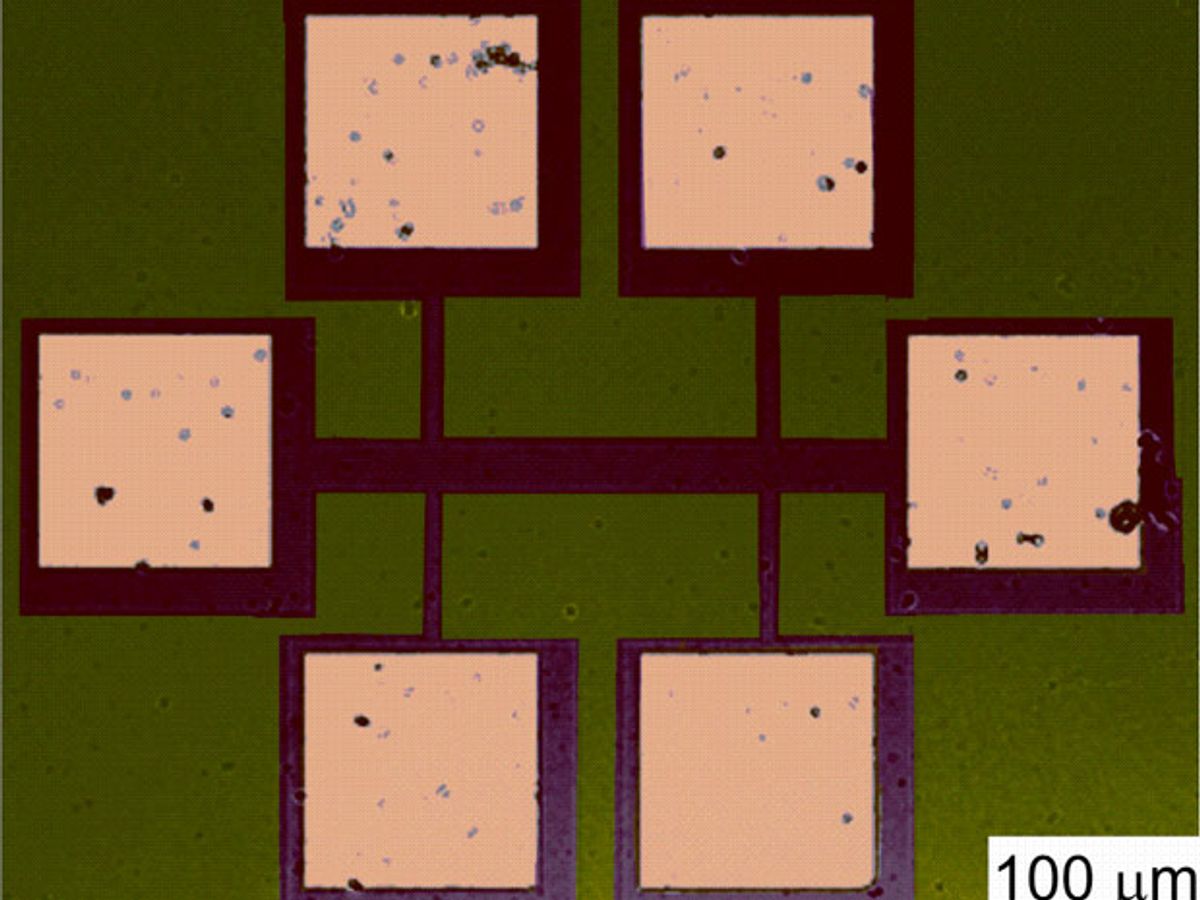Graphene became the subject of much research because its electrical, mechanical, and optical properties make it an excellent material for electronics. The conductivity of freestanding graphene is comparable to that of copper. However, using graphene in electronic components requires a substrate to support it, and researchers were faced with a problem: graphene's electrical properties degrade when bonded to most substrates. For example, bonded to silicon dioxide, a material widely used in electronics because of its good insulating properties, graphene's conductivity decreases by two to three orders of magnitude.
Now a team of researchers has shown that graphene, when deposited on a germanium substrate covered with a thin germanium oxide layer, acquires excellent electrical properties, and its conductivity even improves compared to pure graphene. The team, from the University of Wisconsin-Madison and University of Notre Dame, reported their findings in ACS Nano earlier this month.
One reason the researchers decided to try germanium as a substrate was its low cost. "People have tried, besides silicon dioxide, boron nitride and cadmium telluride, which are expensive," says Francesca Cavallo, who was formerly at the University of Wisconsin-Madison and is now a professor of electrical and computer engineering at the University of New Mexico. A literature search of germanium showed that this material, a cheap substrate, could be a good candidate. "We found that germanium has a very high density of surface states which could provide charge to the graphene, so we tried that," she says.
For the experiment, the team transferred a graphene layer from a plastic support film directly onto the surface of the germanium substrate. Next the researchers passed a current through contacts at both ends of the graphene strip and measured the voltage between them [pictured above]. When a current of 5 µA passed through the strip, practically no voltage was measurable over the contacts, indicating that the conductivity was very high. For comparison, the researchers repeated the same experiment with graphene placed on a silicon dioxide substrate. This time they measured a voltage of about 60 mV, which suggested a decrease in conductivity.
To measure the electron density in the graphene layer, the researchers applied a magnetic field to the strip and measured the voltage across its width. At very low temperatures they could measure a voltage caused by a force acting on the electrons, known as the Lorentz force, resulting in the build-up of charge on one side of the strip (a phenomenon known as the Hall effect). At higher temperatures the build-up of electrons on one side of the strip became counterbalanced by the build-up of holes in the underlying germanium oxide layer, lowering the Hall voltage.
Trying to understand better how the graphene-germanium interface modifies the properties of graphene is the next step for Cavallo and her colleagues. She says they'll modify the interface, removing the oxide and performing more chemical analysis to find out "exactly what is going on."
For Cavallo, the discovery of the happy marriage between graphene and germanium could be an important step for a particular system she—and many others—are interested in because of its promising application: a terahertz emitter. "There are so few terahertz sources available that the terahertz region is called the 'terahertz gap', " she says.
One possibility would be using the new graphene-germanium material in a device called a mechanical wiggler, designed to produce terahertz radiation. The wiggler is a serpentine-shaped conductor that works like a miniature and mechanical version of a free-electron laser. But instead of forcing the electrons to follow an alternating magnetic field, it forces them to follow the bends of the serpentine conductor. As a result, the electrons give off what is known as synchrotron radiation at each curve.
One of Cavallo's colleagues and a co-author of the ACS Nano paper, Max Lagally, a physicist at the University of Wisconsin-Madison, explains that the challenge is that the serpentine cannot consist of metals because they are polycrystalline materials and the electrons wouldn't remain focused, scattering on the crystal boundaries. Enter graphene, which acts like a single crystal and could be potential candidate to make the mechanical wiggler a reality, he says. Lagally and another scientist, Robert Blick, have a patent for the device.
The researchers are hopeful that graphene wigglers on germanium will perform well. "You need a high density of carriers and a high mobility," Cavallo says, "so the combination of the two materials seems to be ideal for that."



